Apartment Social Media
Can Apartment Marketers Afford to Disconnect a 24/7 generation?
You will hear it again and again in 2010 – what started out as a simple and subtle tap on the window has become a crashing of such proportions that you can not ignore it anymore. Business as we know it has changed and like it or not social mediums are here to stay. The question for the coming year is, will you embrace change [embrace engagement] or will you be comfortable with irrelevance? Harvard Business Publishing posted a story titled: The Uber-Connected Organization: A Mandate for 2010 In it, Jeanne C Meister and Karie Willyerd bring notice to a number of companies embracing business as it relates to social media. They really drill home the point of access and I would like to expand on that in the context of the apartment industry.
Apartment employees access to social media
We have all heard of NetNanny and other Internet site blocking technologies used to cut off access. Meister and Willyerd suggest that, “Firms spend millions on software to block their employees from watching videos on YouTube, using social networking sites like Facebook or shopping online under the pretense that it costs millions in lost productivity, however that’s not always the case.” I suggest, in lieu of the monies dedicated to blocking initiatives, it might be time to re-imagine your culture and spend some of those monies enhancing your employees experiences.
One inexpensive example, image turning your employees loose to use Multifamily Insiders – a social media mecca for great ideas relative to our industry. Imagine your employees trading best practices with some of the industries best and brightest visionaries, consultants, practitioners and idea generators. The site includes people that dream stuff up, people who devise strategies about those dreams, people who get out and try things, fail, fix and try again and their are others who give opinions on it all. And, still more that just quietly observe. Point is that there is a mountain of information out there free of charge and ready to use but not if you block access.
Gen Y apartment talent expects access
The article speaks to the fact that by 2014 1/2 of the workforce will be comprised of Gen Y. Much has been written about the idea of this generation growing up digital. The term, social media, is not used to frame conversations like it is with older generations. It is just what they do. It’s the way they communicate. It makes up, to some degree, who they are. Think about it in terms of the multifamily demand boom coming our way.
We have all either written about or read about the coming [it is here] boom in demand created by Gen Y. Much has been made about the idea of Gen Y propping up the profits of the multifamily market for some time to come, especially in light of the stall in supply. Now if the lion’s share of occupancy is going to come in the way of Gen Y residents and 1/2 of the workforce is going to be Gen Y and Gen Y communicates via social media then why would you block access? Facebook is just what they do – Twitter [not as much] is just what they do – Text messaging is just what they do. Communicating experiences is just what they do. Cut it off and they just won’t work for you. Rather they will work for your competitor who is embracing business are it relates to today’s workforce.
If you don’t embrace change – I encourage you to get comfortable with irrelevance
Why would you not allow access? Why would you cut off the very essence of what defines Gen Y? I’ve tried to think through the downfalls and, there are some that have merit. But there are zero that would keep me up at night – that is provided our organizations guide the conversation. Will there be hiccups? Yes. We have already seen a few in this space. As the article implies in this quote, “Has blocking Facebook today become the equivalent of denying an employee access to a phone at work 40 years ago or email 20 years ago?” I have to believe there were hiccups when we finally gave up control of these communication mediums – I bet we could site some as recent as yesterday.
[Update] Found this over at The Marketing Spot – speaks to the point and could just as easily been social media holding up the productivity [in this case customer service]:“When we landed in Dallas after an 11 hour flight from Tokyo, and I wanted some coffee. I was expecting the same type of customer service I received at Starbucks in Seoul (they are everywhere in Seoul too). The lone employee on duty at the Starbucks in DFW Terminal B was having a personal conversation on the store phone. Two people were in line. After she leisurely finished her conversation, she took one person’s order, then begin to make his drink, leaving me and the other customer in line waiting, not even acknowledging us. I left without ordering. You’re not in Seoul anymore, Dorothy.”
To sum up – can you really afford not to re-imagine your organization in 2010 as it relates to the use of social media? Can you really afford to cut off access to a 24/7 connected generation? Remember they are/will be the front line serving your target 24/7 connected generation. Remember there are trailblazers out there that are willing to give them what they want. My speculation is those organizations will love being relevant.
Share this:
Tell Them How Much You are Moved by the Neighborhood
 Don’t tell prospects and residents how much your apartments are – tell them how much you are moved by the neighborhood.
Don’t tell prospects and residents how much your apartments are – tell them how much you are moved by the neighborhood.
 Tell them about waking up on a crisp fall morning and taking a run in Forest Park just one block over from your apartment. Tell them about stopping back by Velocity Coffee Shop to have a cup of coffee – served by a friendly Barista named Tracy who rarely smiles but wants to. Tell them about the free copies of the New York Times, Wall Street Journal and the St. Louis Dispatch. Tell them about the free wifi. And, oh – it’s a bike shop too with cool bike motif everywhere. The bathroom even has a cool chalkboard where you once drew a giant dragon that looked as if it were eating the giant flower someone else drew.
Tell them about waking up on a crisp fall morning and taking a run in Forest Park just one block over from your apartment. Tell them about stopping back by Velocity Coffee Shop to have a cup of coffee – served by a friendly Barista named Tracy who rarely smiles but wants to. Tell them about the free copies of the New York Times, Wall Street Journal and the St. Louis Dispatch. Tell them about the free wifi. And, oh – it’s a bike shop too with cool bike motif everywhere. The bathroom even has a cool chalkboard where you once drew a giant dragon that looked as if it were eating the giant flower someone else drew.
Tell them about Papa John’s pizza and Subway at the end of the block where Tony and Charles remember your name and serve you with a smile. Tell them about Atlas Restaurant located in the heart of the neighborhood and the amazing food and desserts that they serve. Tell them about The Loop and The Central West End [very cool Saint Louis neighborhood hangouts] being just one mile away and don’t forget to mention the friendly cab driver resident who will drive you over while entertaining you with great conversation. Tell them about all the fun nights you had in those neighborhoods.
Tell them about Mr. and Mrs. Wang who own the dry cleaners right next door to Papa John’s and how they wash and fold clothes for $0.75 a pound. Tell them how much you love the fact that each Christmas they give your children big canisters of candy as a thank you for your business.
Tell them about the dog park even if you are not a pet lover – not even in the least.
If you haven’t figured it out yet, this is the neighborhood that I fell in love with in Saint Louis. Oh yeah, and I lived in a great apartment that overlooked a tree lined street that looks amazing in the fall.
Tell them with conviction how much you love the neighborhood the rest will fall right into place.
Share this:
Apartment Marketing – Negative Capability
 A good deal of insanely great change is influenced from the bottom up.. Why is that? It’s precisely for the reason that a front-liner’s negative capability meter is on par with Shawn White’s eXtreme fearless factor. John Keats brought the theory of negative capability to light back in the early 1800’s – negative capability defined as one’s ability to embrace uncertainty. For many property management firms across the country, embracing social media in all it’s implications will rest on those with the ability to exercise or greatly influence negative capability within their respective organizations.
A good deal of insanely great change is influenced from the bottom up.. Why is that? It’s precisely for the reason that a front-liner’s negative capability meter is on par with Shawn White’s eXtreme fearless factor. John Keats brought the theory of negative capability to light back in the early 1800’s – negative capability defined as one’s ability to embrace uncertainty. For many property management firms across the country, embracing social media in all it’s implications will rest on those with the ability to exercise or greatly influence negative capability within their respective organizations.
Fighting the good fight
What will these champions of change face as they venture into corner offices across the country? The famed Edward de Bono calls it Rock Logic. You might recognize it as linear, pragmatic, methodical or even orderly thinking. Where negative capability thinkers thrive on ambiguity their counterparts want the back up, the proof in the pudding and they want it in solid Rock Logic spreadsheet fashion. Your best bet is to make the case for Good Enough.
Good Enough vs. All
Most C level property management executives live for the numbers. They also demand that they have ALL the available information to back up the numbers. They will delay decisions for months on end if they think [not feel] that any piece of information evades them. When in comes to developing a premise for decisions in uncharted territory, Good Enough loses to All every time. Think about that in the context of making the case for incorporating social media into your on-line strategy.
The rub is that the industrial age, where Rock Logic thinking absolutely applied, has given way to the knowledge age and this generation thrives on making things happen in the midst of chaos. They thrive on making decisions based on Good Enough information knowing full well that they will remain nimble enough to change direction if need be. They thrive on trying new things and changing course at the drop of a hat. Fail fast succeed sooner is part of their DNA.
All that in mind, convincing C level types that Good Enough, as it relates to embracing social media, will/should become their motto for the stump of 2009. Encourage and massage those negative capability muscles so that Good Enough has space in their thought process. Go for it and fight the good fight as your organization will be all the better for it.
Share this:
Apartment Marketing Idea: You are not Your Apartment Prospect
 I think one of the easiest traps to fall into when marketing to apartment prospects or residents is to think that they want what you want and they will like what you like. It is really easy when you don’t take the time to understand who your customer is and what they value. In order to that you have to be willing to spend time asking questions, trying new things, testing new theories, crushing sacred cows and refining your successes. All in the name of your client’s changing tastes.
I think one of the easiest traps to fall into when marketing to apartment prospects or residents is to think that they want what you want and they will like what you like. It is really easy when you don’t take the time to understand who your customer is and what they value. In order to that you have to be willing to spend time asking questions, trying new things, testing new theories, crushing sacred cows and refining your successes. All in the name of your client’s changing tastes.
Always done it that way
We have all heard the statement that if you keep doing what you have always done expecting a different result – you get the definition of insanity. It’s as true in our space as it is in different industries across America. We keep at it year after year because it’s easy. It’s really hard to go against the grain. It’s really hard to convince the powers that be that giving up tried and true processes is a good thing. Problem with this is that change, if not embraced, will free up your future sooner or later.
The ABC’s of change
In selling ABC stands for Always Be Closing, in understanding that you are not your apartment customer it stands for Always Be Changing. With the advent of the internet came the rapid acceleration of change. In one fell swoop we had every piece of information we could every want at our finger tips. That is not to suggest that it has not taken time to morph our imbued information gathering habits but it is to say it’s not your older brothers world anymore. If you don’t like change you will like irrelevance even less and that is your prize for standing still today.
How do you keep up with your customer
Tom Peter’s popularized the phrase Management by Walking Around [MBWA], defined by BusinessDictionary.com this way;
Unstructured approach to hands-on, direct participation by the managers in the work-related affairs of their subordinates, in contrast to rigid and distant management. In MBWA practice, managers spend a significant amount of their time making informal visits to work area and listening to the employees. The purpose of this exercise is to collect qualitative information, listen to suggestions and complaints, and keep a finger on the pulse of the organization. Also called management by wandering around.
I think it is a fair way think about how to keep up with your customer. We should be interacting with them both on and offline. Here are just a couple of ideas on how to do that;
- Ask for their opinion any time you see them
- Hang out where they hang out
- Eat where they eat
- Read the magazines, blogs and tweets they read
- Read the books, ebooks and ezines they read
- Ask permission to enlist them on your Facebook, MySpace and Tweet pages
- Participate on their Facebook, MySpace and Tweet pages
- Shop where they shop
- Read what they review
- Ride the buses they ride
- Frequent the places they work
- Experience the products and services they like
- Work out where they work out
- Ask what keywords they used to find you
How about we call this Creating Experience by Walking Around [CEWA]. The real key to remember here is that you are not your customer and in order to understand your customer you must engage and participate with them. And, make it easy for them to do the same with you.
Share this:
Outsource Your Social?
Found this interesting chart over at SmartBlog
Should companies ever outsource their social-media activities?
| No, this runs counter to the idea behind social media. | |
| It depends. | |
| Yes, if it makes sense financially. | |
| I’m undecided. | |
|
Curious what the community thinks – For the record – I fall in the majority.
apartment marketing ideas, using social media to market apartments
Share this:
- « Go to Previous Page
- Page 1
- Interim pages omitted …
- Page 5
- Page 6
- Page 7
- Page 8
- Page 9
- Page 10
- Go to Next Page »


